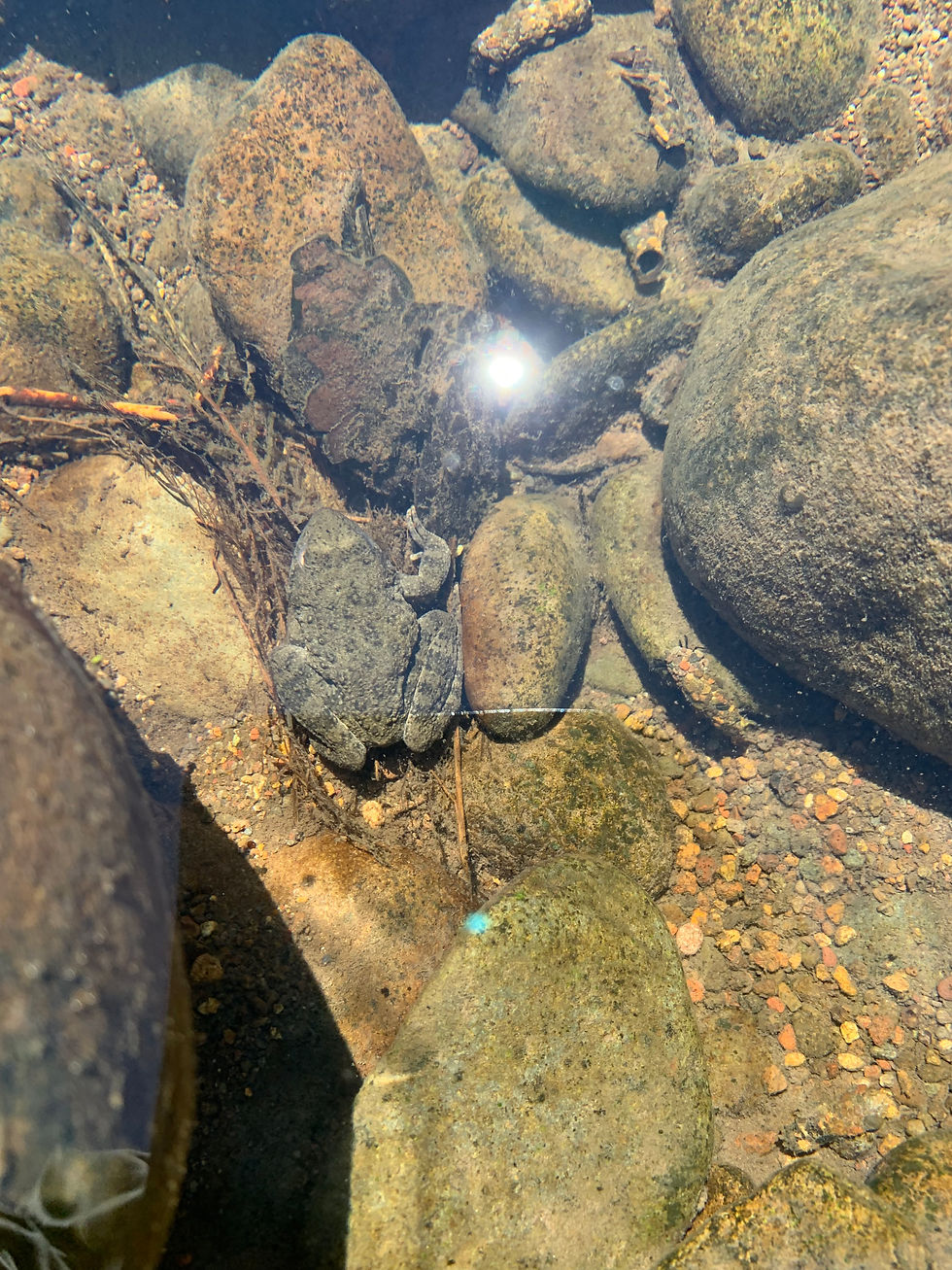Restoration Spotlight: Foothills Yellow-Legged Frog
- Max McClarnon
- Sep 6, 2024
- 3 min read

This summer I have been working at the pasture restoration site along South Fork Little Butte Creek RM 6.2. This site has a forested creek section and a pasture restoration section. In the pasture restoration’s footprint winds a historic side channel that was re-dug and reincorporated into the stream. Even though the side-channel is only in its second season since excavation, it amazingly has deep pools, cobble-bottomed riffles, and is teeming with life. The sun shining down on this segment of the stream has created the perfect habitat for one of the West’s unique and threatened amphibians: the Foothills Yellow-legged Frog.
Foothills Yellow-Legged Frogs (Rana boylii) is a medium sized (16-75mm or about 3in on average) frog that inhabits rocky streams. They are well camouflaged in and along the stream with variable dorsal (back) coloration ranging in the grays, browns, and reds. This cryptic patterning makes them almost invisible until they silently hop into the flowing water where they will settle on the cobble bottom of the stream and become just another rock. Even the tadpoles adopt a cryptic rocky color. This frog is aptly named as it prefers lower elevation (foothills) streams, and if you get a glimpse of the underside of its legs you will see that they are lemon yellow. They are found in California and Oregon at lower elevations (0-1800m in CA and 0-850m in OR) west of the Cascade and Sierra Nevada Mountains. In the Rogue Valley, populations have declined to the extent that they are rarely seen on the valley floor. This decline is attributed to manmade changes in stream flows and the loss of low flow side channels and gravel bars. The state of Oregon recognizes this species as a sensitive conservation strategy species. and some of the California populations are federally recognized as threatened and endangered.

Check out this camouflage!
Foothills Yellow-legged Frogs require sunny, clear, rocky streams with shallow side channels and pools. In spring, adults will migrate from winter refuge habitat to suitable juvenile habitat to begin courting and egg laying. They are the only stream frog species in western Oregon that attach their eggs to rocks– the clear, cool oxygenated water allows them to develop into tadpoles in as little as a week. They scrub off any silt or algae from the downstream side of a rock in an area of relatively calm flow and glue a mass of up to about 1000 eggs to the rock. They have to time the egg laying just right with the end of winter high flows and snowmelt so that the eggs don’t get scoured by high water or dry out from low flows. They often lay eggs in June or July, and the froglets emerge in late July through September.
Foothills Yellow-Legged Frogs basking on rocks. Photos provided by James Bettaso.
The area surrounding the mainstem of Little Butte Creek is overshadowed with few sun patches– which makes for good adult habitat, but not great for breeding habitat. In contrast, the new sunny side-channel created the perfect breeding grounds for adult frogs migrating down the mainstem. In July, it was very exciting to see that the pasture side channel had numerous egg masses and thousands of tadpoles. These tadpoles began emerging as froglets in mid-August and have moved towards the mainstem as lower summer flows reduce the water level in the side channel.
Photos of South Fork Little Butte Creek Restoration Site, drone imagery courtesy of Cascade Stream Solutions.
For me, the whole experience of seeing the adults come in to breed and the overall success of the tadpoles has been a rare and treasured experience. This species has declined in our area and has been something that one has to be lucky to encounter. It’s a great sign that restoration efforts are working and providing much needed habitats to a number of threatened species. I would not be surprised if this restored side channel created conditions for the best breeding year these frogs have seen in the last few decades in Little Butte Creek.














Comments